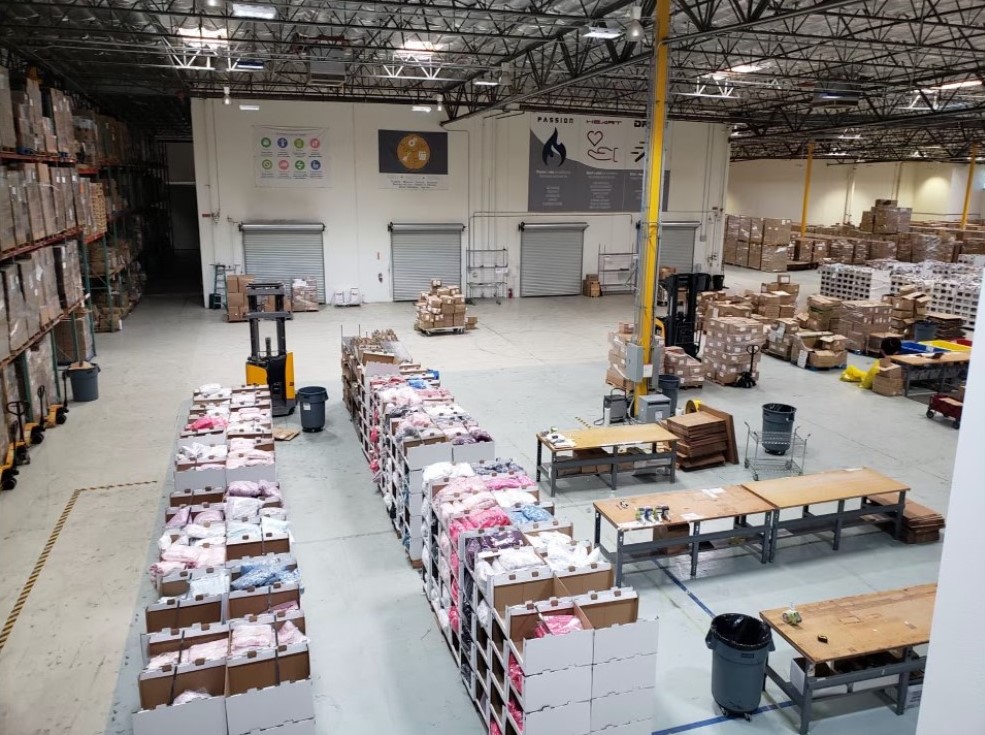The backbone of any successful business often relies on factors that may not always be evident at first glance. One such crucial yet overlooked aspect is the warehouse layout. It’s the silent hero, working behind the scenes to ensure seamless operations. But did you know that an inefficient warehouse layout could be a hidden killer to your business? Let’s explore how.
One significant event related to inefficient warehouse layouts is the case of Amazon’s holiday season fulfillment center struggles in 2013. During this busy period, Amazon faced significant challenges due to the inefficiencies in its warehouse layout and operations.
The issue primarily arose from a lack of proper organization and optimization of their storage space. Products were scattered throughout the warehouse, making it difficult for workers to locate and retrieve items quickly. The inefficient layout and storage system resulted in delays in order fulfillment, longer processing times, and ultimately, missed delivery deadlines during the crucial holiday season.
The inefficient warehouse layout not only affected the company’s operational efficiency but also impacted customer satisfaction. Many customers experienced delays in receiving their orders, and some even received incorrect or incomplete shipments.

The Importance of Efficient Warehouse Layouts
A warehouse layout refers to the physical arrangement of the warehouse infrastructure, including storage spaces, loading docks, shipping areas, office spaces, and workstations. This design is carefully planned to ensure optimal usage of space, effective flow of goods, and safety of employees.
Efficient warehouse layouts form the backbone of any logistics company, manufacturing firm, or business that stores goods in bulk. They directly influence the speed of operations, the accuracy of order picking, safety conditions, and ultimately, customer satisfaction. But identifying inefficiencies and the resulting problems isn’t always straightforward.

Common Indicators of an Inefficient Warehouse Layout
Overcrowded Storage Areas
Does your warehouse look like a sea of boxes with narrow aisles? An overcrowded storage area indicates a lack of space optimization. It slows down your operations and increases the risk of accidents.
Inefficient Picking Paths
If your warehouse staff is running marathons to pick items for one order, you’re dealing with inefficient picking paths. This increases picking times and subsequently, delivery times.
Frequent Stock Outs
Are your products frequently running out of stock? This could be due to poor space utilization or improper inventory management, both linked to inefficient warehouse layouts.
Poor Safety Conditions
Accidents and injuries are a serious concern in an inefficient warehouse layout. Limited aisle space, improper storage racks, and poor lighting can create hazardous working conditions.
Consequences of Inefficient Warehouse Layouts
Wasted Time and Effort
Inefficient layouts lead to longer pick paths, increased retrieval times, and unnecessary movement of goods. This results in wasted time and effort, reducing overall productivity.
Increased Operational Costs
Increased labor costs, more wear and tear on equipment, and higher energy consumption, all these results from inefficient warehouse layouts and they inflate your operational costs.
Lower Worker Morale
Imagine having to navigate a cluttered, unsafe workspace every day. This leads to a decrease in worker morale, negatively affecting their performance and productivity.
Decreased Customer Satisfaction
Longer delivery times, incorrect orders, and stock-outs all stem from an inefficient warehouse layout. And guess who bears the brunt of it? Your customers, resulting in decreased satisfaction and possibly loss of business.
Improving Warehouse Efficiency
Employing Warehouse Layout Best Practices
From optimizing storage areas to streamlining picking paths, adopting the best practices in warehouse layout design can bring significant improvements.
Implementing the Right Technologies
Using technologies like Warehouse Management Systems (WMS), Automated Storage and Retrieval Systems (ASRS), and IoT can help track inventory accurately, improve picking efficiency, and reduce manual errors.
Continuous Improvement and Employee Training
Implementing changes is not enough. It’s crucial to monitor performance, make necessary adjustments, and ensure that employees are adequately trained for optimal use of the new layout and technologies.
Conclusion
An inefficient warehouse layout is indeed a hidden business killer, silently draining profitability and productivity. To mitigate this, understanding the common signs of inefficiency, its consequences, and the possible solutions are key. By investing time and resources into improving your warehouse layout, you are safeguarding the future success of your business.
FAQs
- What are some common signs of an inefficient warehouse layout?
- Overcrowded storage areas, inefficient picking paths, frequent stock-outs, and poor safety conditions are some signs of an inefficient layout.
- What are the consequences of an inefficient warehouse layout?
- Increased operational costs, wasted time and effort, decreased worker morale, and lowered customer satisfaction are common consequences.
- How can I improve my warehouse layout?
- Employing warehouse layout best practices, implementing the right technologies, and continuous improvement and training can enhance your warehouse efficiency.
- What technologies can assist in improving warehouse layout efficiency?
- Warehouse Management Systems (WMS), Automated Storage and Retrieval Systems (ASRS), and IoT devices can significantly improve warehouse efficiency.
- Why is it important to focus on warehouse layout efficiency?
- An efficient layout improves operational speed, reduces costs, boosts worker morale, and enhances customer satisfaction, directly impacting the business’s success.
